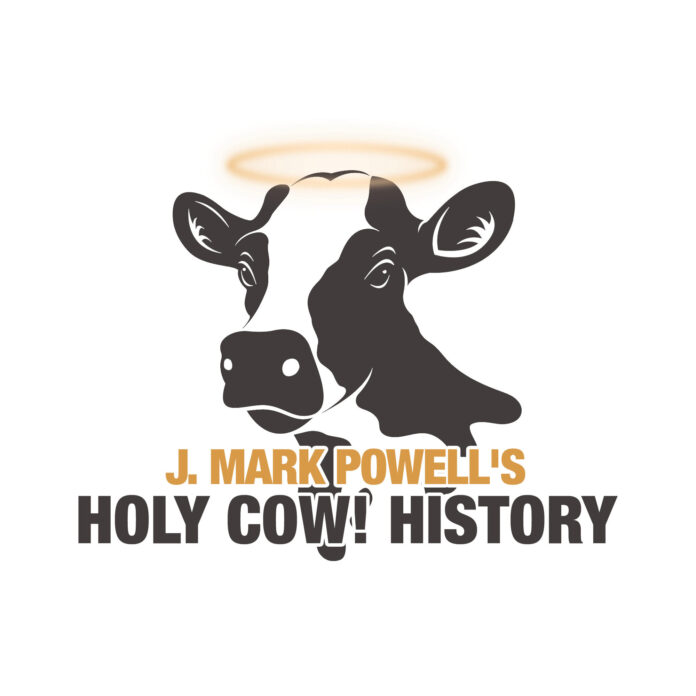By J. Mark Powell
The Yankee cavalryman had no idea what lay in store when he raised his sword that Easter Sunday afternoon. How could he? All he knew was he had a job to do.
So, he lifted his arm and prepared to strike. What happened next triggered a chain of events that culminated in creating one of the most popular products of all time, one that may even be in your home right now. But we are getting ahead of ourselves.
It was April 16, 1865. The War Between the States was in its final days. Robert E. Lee had surrendered his army in Virginia one week earlier. Some 563 miles to the southwest, a small band of Southern soldiers drew up in line of battle outside the manufacturing hub of Columbus, Ga. Federal horsemen swooped in to capture it.
The brief engagement there that spring afternoon was one of the last battles of that saddest of all American wars. But it indirectly led to something that far outweighed its military significance.
The troops in blue rushed for the 14th Street Bridge, the key to controlling the city. Blocking their path was the Third Cavalry Battalion of the Georgia State Guard. Its ranks included 33-year-old Lt. Col. John Stith Pemberton.
An educated man with a medical degree, he eventually opened a drugstore in Columbus. Married and the father of a young boy, his future looked bright. The single swing of a wrist changed everything.
In the bitter struggle for the bridge, a Northern horseman slashed his saber across Pemberton’s chest, sending him crashing to the ground with a serious wound. Pemberton eventually recovered. But the rest of his life was filled with intense pain from his injury. Veterans in blue and gray who survived war wounds spent their remaining days in an often-vain quest to ease their suffering.
Pain relief was in its infancy in the Victorian Era. Aspirin would not be invented until late in the century. The best relief for chronic physical misery was laudanum, a mixture of opium soaked in alcohol. It’s little wonder that the first generation of American drug addicts was Civil War veterans.
Pemberton was no exception. He became hooked on morphine. But he was also constantly searching for new ways to ease his pain. Being a druggist with a keen interest in chemistry, he explored various compounds to see if they could provide an escape from his suffering.
Working in his little Columbus shop, he devised something he grandly called “Dr. Tuggle’s Compound Syrup of Globe Flower.” But given that its active ingredient came from the toxic buttonbush plant, it had limited appeal.
Pemberton then turned his attention to kola nut, damiana and coca. They led to a new drink called “Pemberton’s Wine Coca.” He excitedly took his latest creation to Atlanta and began selling it there.
But his timing was lousy. The city of Atlanta and Fulton County, where it is located, went “dry” in 1886 when prohibition ordinances were adopted. He needed a non-alcoholic version, and he needed it fast.
So, Pemberton teamed up with fellow drugstore owner Willis E. Venabale. They accidentally stumbled on a game-changer: Carbonated water was an ideal substitute for wine. It took trial and error, but they eventually got their new drink. And this time, they decided to sell it as a fountain beverage rather than a bottled medicine. Marketing pioneer Frank Robison liked the alliteration in a suggested title change. Pemberton readily agreed.
With that, Coca-Cola was born. (Robertson went on to devise the distinctive Spencerian script still used in the logo today.)
Yet, Fate was unkind to Pemberton. Though he realized he had stumbled on something truly big (he envisioned it becoming a “national” drink one day), he couldn’t shake his morphine addiction. Needing cash, he sold his stake in the concoction he helped create. He kept one final portion for his son until desperation forced him to sell it in 1888 for $300, less than $9,500 today.
Pemberton died of stomach cancer that August at age 57. His son and only child died an opium addict six years later.
As for the company itself … well, you know what happened. Its global footprint is so large that — mathematically — every person on the planet consumes one Coca-Cola product every four days. And with 7.3 billion people on Earth, it’s no wonder Coke’s gross profit was $23.2 billion in 2021, with this year projected to be even better.
All that was unimaginable to the unknown Union horseman on that Easter Sunday afternoon in 1865. With the war over, he eventually rode home without knowing what he and his sword had set in motion.
J. Mark Powell is a novelist, former TV journalist and diehard history buff. Have a historical mystery that needs solving? A forgotten moment worth remembering? Please send it to [email protected].




